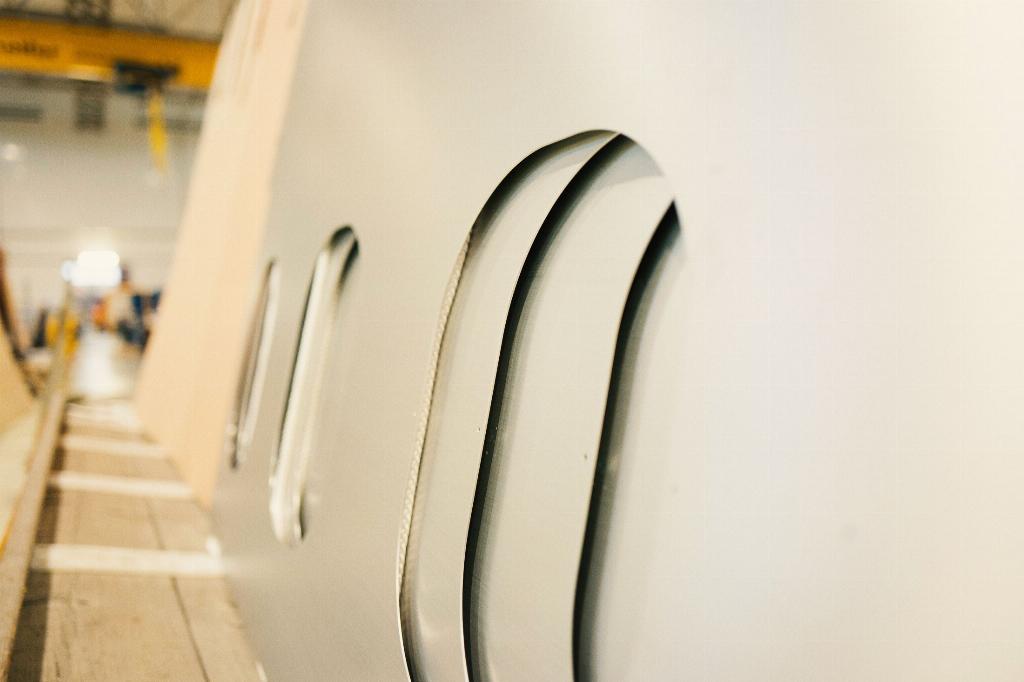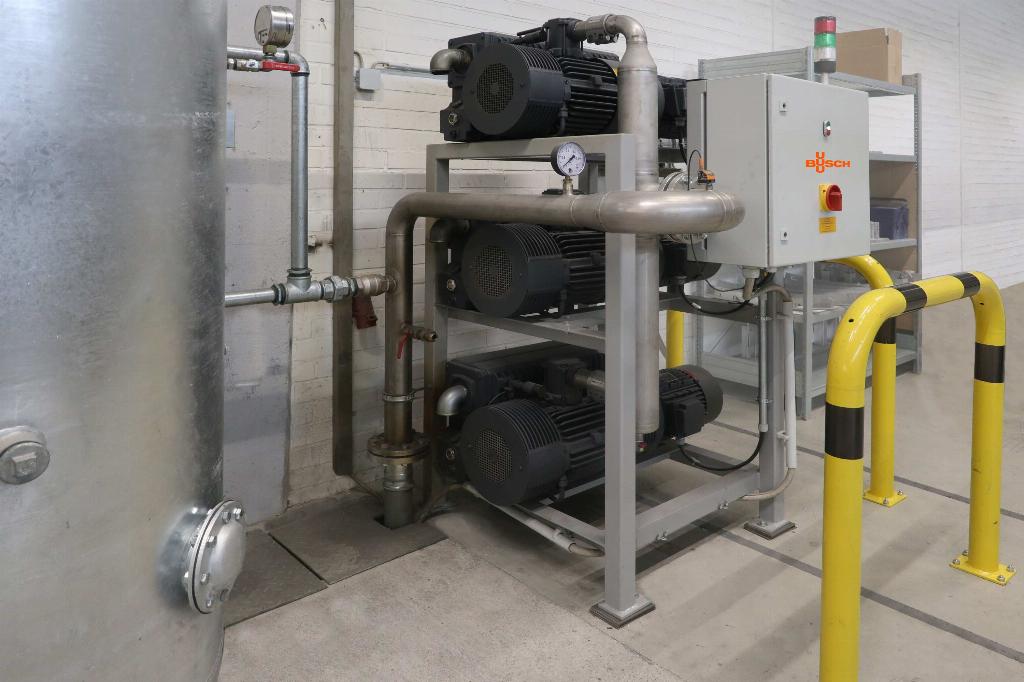Getting a grip on workholding

Busch Vacuum Solutions reveals how its vacuum systems are helping A&T increase production handling and save energy when generating vacuum for clamping and machining light metallic sheets.
Busch Vacuum Solutions reveals how its vacuum systems are helping A&T increase production handling and save energy when generating vacuum for clamping and machining light metallic sheets.
The production of high-precision aircraft components made of light metal is among the fields of activity of A&T Group. The company processes aluminium sheets from 0.3 to 8mm thick and up to 7m long. When milling the metal sheets on two 5-axis milling machines, vacuum suction cups are used to hold the pre-bent sheets on the machining tables.
A vacuum system from Busch Vacuum Solutions with three R5 rotary vane vacuum pumps generates the vacuum for both milling machines. Due to the design and pressure-dependent control of the vacuum system, it works extremely energy-efficiently and ensures reliable holding of the aluminium sheets during contour milling.

A&T Group was founded in 2007 and offers various products and services with the network of its own companies. In addition to aircraft components made of light metal, A&T manufactures decorative profiles in various geometries for aircraft interiors in series production. The company also produces custom-fit glass fibre and carbon blanks for the manufacture of rotor blades for wind turbines.
A&T Manufacturing at the company's headquarters in Nordenham specialises in the processing of aluminium for aircraft construction and manufactures complex structural components for the civil aviation industry with the highest precision and quality standards. Sheets of aluminium, aluminium alloys or titanium are used. Flat metal sheets are surface-milled on machining tables using 3-axis milling machines. Each of the machines can mill up to 2.8m wide and 10m long sheets. Vacuum is used to hold the sheets. They are held securely and immovably by suctioning through openings in the machining tables. The vacuum is generated by two MINK claw vacuum pumps from Busch. These dry (operating fluid-free) vacuum pumps are pressure- and frequency-controlled.
It is more technically complex, for example, to mill contours of metal sheets that have already been rolled or stretch-drawn into shape to match the radius of an aircraft fuselage. As they cannot be laid perfectly flat on the machining table, height-adjustable vacuum suction cups are used. They are attached precisely at the specified position on the machining table and adjusted in height to the formed metal sheet part.
To have and to hold
The role of the Busch vacuum system is to precisely maintain the pre-set vacuum level. This vacuum level is programmed in such a way that, on the one hand, it is sufficiently high to hold the metal sheets safely during milling and, on the other hand, it is not too high so that the metal sheets could possibly warp or bend. Since metal sheets as thin as 0.3mm thick and up to 7m long are sometimes processed, the set vacuum level is an important parameter for the quality and precision of the components.
Each of the two milling machines had previously been fitted with an obsolete rotary vane vacuum pump which ran continuously throughout the entire operating time. In three-shift operation and a five-day week, the two 7.5kW motors consumed around 85,000kW hours per year.

This was reason enough for production manager, Leenert Folkens to strive for a more energy-efficient vacuum supply. Thanks to the great experiences with vacuum pumps from Busch on the other milling machines, he consulted a Busch vacuum expert. The decision was made for a vacuum system with three R5 rotary vane vacuum pumps.
Upstream of this system is a buffer tank with a volume of 1,000 litres. This means that both milling machines are supplied with vacuum depending on pressure. The control unit is designed so that the pre-set vacuum level is permanently maintained in the buffer tank. When the system is started, only the first vacuum pump starts up. If this vacuum pump has not reached the vacuum level after 60 seconds, the second vacuum pump switches on. If the vacuum level is still not reached after another 60 seconds, the third vacuum pump is automatically switched on. The control unit works in such a way that the order of the vacuum pumps changes every two days. This ensures that all three vacuum pumps have the same operating times. This is important, says Folkens, because usually only one vacuum pump is in operation, as its performance is sufficient for both milling machines. Two, or even all three vacuum pumps, are only used if by chance both milling machines are started at the same time after a changeover.
Adept at adaptation
Using the control unit, it is therefore possible to adapt the performance of the vacuum system to the actual demand. Each of the three vacuum pumps has a pumping speed of 300m3 per hour. The maximum pumping speed is therefore 900m3 per hour.
In daily practice, one of the three R5 rotary vane vacuum pumps runs every 5.5 minutes for about 30 seconds. This is usually sufficient to maintain the desired vacuum level in the vacuum vessel or to ensure sufficient vacuum at the vacuum suction cups on both milling machines. This results in a running time of about five minutes per hour for each vacuum pump. If, taking into account the start-up operation and the associated longer running time (instead of five minutes, an average running time of 10 minutes per hour is assumed), this results in an annual power consumption of approximately 7,100kW hours. Compared to the electricity consumption of 85,000kW hours previously, this represents an annual energy saving of 77,900kW hours or over 90%.
In deciding on a central vacuum system, Folkens has perfectly fulfilled his goal of saving energy. He now also has a redundant vacuum supply that makes sure the clamping devices on the milling machines are not adversely affected if a vacuum pump were to fail. Maintenance of the vacuum pumps can now also be carried out on the milling machines without stopping production. In addition to the massive energy saving, he has therefore also found an extremely operationally reliable solution.













